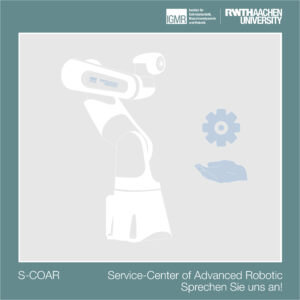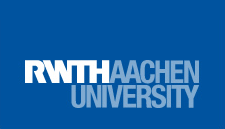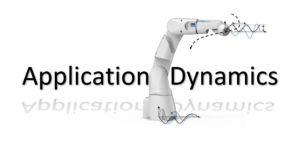Kategorie: ‘Robotik’
IIDEA at the daaap annual meeting 2025 in Koblenz

In March, we were able to take part in this year’s annual meeting at the Rhein-Mosel-Werkstätten in Koblenz as an exhibitor and network member of daaap.
A special highlight: The event was opened by Ms Schall, Minister for Labour, Social Affairs, Transformation and Digitization in Rhineland-Palatinate, among others. She took the time to get to know the IIDEA project and was even able to try out our model workplace for herself.
We are delighted with the interest shown in our project by the participating workshops. The direct exchange, valuable discussions and new contacts show that The vision of inclusive digitalization is shared and carried forward.
Contact person:
Mathias Hüsing
Bronze at the German Championship in Robot System Integration

Congratulations to Esteban and Gregory – they took 3rd place at this year’s championship at FANUC in Neuhausen and thus won bronze!
The task: a challenging battery assembly that had to be completed in just three days. The standard was particularly high this year and for the first time eight teams took part.
We are very proud of our two talents! Many thanks to Sophie Charlotte for making this participation possible!
Contact person:
Sophie Charlotte Keunecke
Automated robotic dismantling/disassembly – screw detection and removal for electric vehicle recycling
Fully automatic disassembly with precision!
Our new robotic system is revolutionizing the disassembly of electric car batteries. Using the Neura Lara 8 robot and the latest image processing technologies, we recognize screws fully automatically and position the robot precisely to remove them safely.
Thanks to the integration of YOLOv8 and Intel RealSense depth cameras, the system can locate screws in real time and position them optimally on its own. No manual intervention necessary – the system works completely autonomously!
Our goal: to make the recycling process safer, faster and more efficient. Fewer risks for workers and maximizing the recovery of raw materials at the same time. This is the future of the circular economy!
You can find more information about #dimonta here.
contact:
Markus Schmitz
Daniel Gossen
3D Capsule Compliant Grippers
At the ASME IDETC-CIE conference in Washington, DC, we had the opportunity to present the prototype of the “3D Capsule Compliant Gripper”. This novel surgical manipulation tool was specifically designed to make lymph node isolation even more precise and gentle.
Our approach: a capsule-like structure with flexible, shape-optimized elements that have been tailored using a hill-climbing mutation algorithm. The white “petals” of the prototype were 3D printed from PLA, the red flexible components from TPU. Thanks to the cost-effective production at our institute, we were able to create the first efficient solution on a macro scale, which serves as a proof of concept.
Contact: Estefania Hermoza Llanos
The Service Center for Advanced Robotics at IGMR is your pioneer for innovative automation projects

Ideas and support for automation in various specialist areas
Dr. Markus Schmitz is your contact for the implementation and planning of automation projects and for technical advice. Please send requests for quotations to scoar@igmr.rwth-aachen.de.
Exploration of Automated Capability Estimation for Human-Robot Teaming
Der an dieser Stelle eingebundene Inhalt führt Sie auf Seiten, die von der von Google betriebenen Seite YouTube - YouTube, LLC, 901 Cherry Ave., San Bruno, CA 94066, USA - zur Verfügung gestellt werden. Mit dem Aufruf des Inhalts kann YouTube Ihre IP-Adresse und die Sprache des Systems, sowie verschiedene browserspezifische Angaben ermitteln. Wenn Sie in Ihrem YouTube-Account eingeloggt sind, ermöglichen Sie YouTube, Ihr Surfverhalten direkt Ihrem persönlichen Profil zuzuordnen. Dies können Sie verhindern, indem Sie sich aus Ihrem YouTube-Account ausloggen. YouTube verwendet Cookies und Tracking-Tools. Die Datenverarbeitungsvorgänge sowie die Zwecke der Verarbeitung können direkt bei YouTube erfragt und eingesehen werden.
In our Human-Robot Teaming group, we have a vision that humans and robots will one day be able to work together seamlessly and intuitively in a kind of human-machine symbiosis. Recently, we implemented an exploration application to demonstrate the potential of human-robot teams. The exploration includes a human capability assessment system to evaluate human potential and derive appropriate robot actions.
In the future, robots will be able to use the identified capability deltas to find gaps between human performance and the requirements of the work process. Based on these deltas, actions will be derived that do not take work away from humans, but instead increase human capabilities until the requirements are met. Such systems will enable the human-robot team to reach a state that is similar to what is called “flow”.
contact:
Carlo Weidemann
First movement of PARAGRIP with new control unit
PARAGRIP’s control architecture has been completely redesigned in order to be fully equipped for its future tasks in multidirectional additive manufacturing (MDAM) with arc welding (WAAM). The movements of all four arms can now be planned, simulated and executed on the real robot using MoveIt in ROS2. The joint positions of the physical robot are always fed back to ROS2, allowing the integration of online planning algorithms in the future. The video shows the planning and execution of a simple test motion of the PARAGRIP.
More information about the project can be found here.
Contact: Jan Wiartalla
IGMR Consensus In Sensor Robot Network
Agile and freely networked assembly systems are characterised by the sensoric-supported cooperation of several mobile and stationary robots. However, the dynamic transformation of the production lines demands especial control strategies for robotic manipulators. Fast and reliable motion planning and control schemes should be developed that appropriately react to the changes in the environment and setpoints, and produce feasible motions. These assembly systems can then be mapped into the structure of a meta-model that leads to the creation of digital shadows of the factories of the future.
Contact: Daniel Gossen
Watch the video on our Youtube channel: here.
A multi-layered task sequencing approach
Cobots are highly sought by manufacturing companies in contrast to fully automated production lines, as they provide the additional benefit of flexible operations. A major hurdle with current collaborative setups is tedious setup times for efficient and robust co-working as well as poor support for random interruptions.
This project focuses on enabling autonomous collaborative operations for serial manipulators where interruptions from human agents occur at random while ensuring minimal setup times. To this end, two primary aspects that impact task execution are addressed, namely execution time and co-working as enumerated below:
- A method is developed to minimise the total distance travelled, by following the most optimal sequence for the given task while retaining online operational capabilities
- A real-time replanning and co-working algorithm for randomly interruptive environments is developed and implemented to ensure continued operation even when regions of the workspace are occluded while guaranteeing safety of the human agents in the workspace. The co-working controller operates fully autonomously.
An example of the working of the deployed on a prototype platform consisting of a collaborative UR10e arm, a stereo camera for static environment mapping and a laser scanner for mapping of dynamic obstacles is shown in the video.
Contact: Daniel Gossen
music: madiRFAN – Both of Us (https://pixabay.com/music/beats-madirfan-both-of-us-14037/)
Watch the video on our Youtube channel: here.




